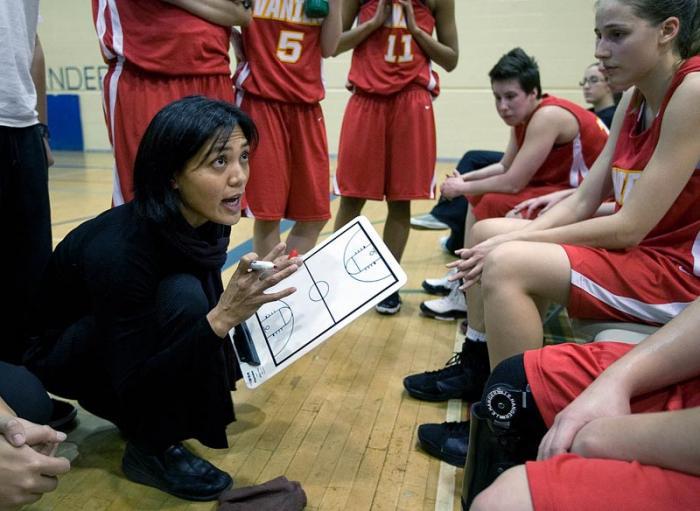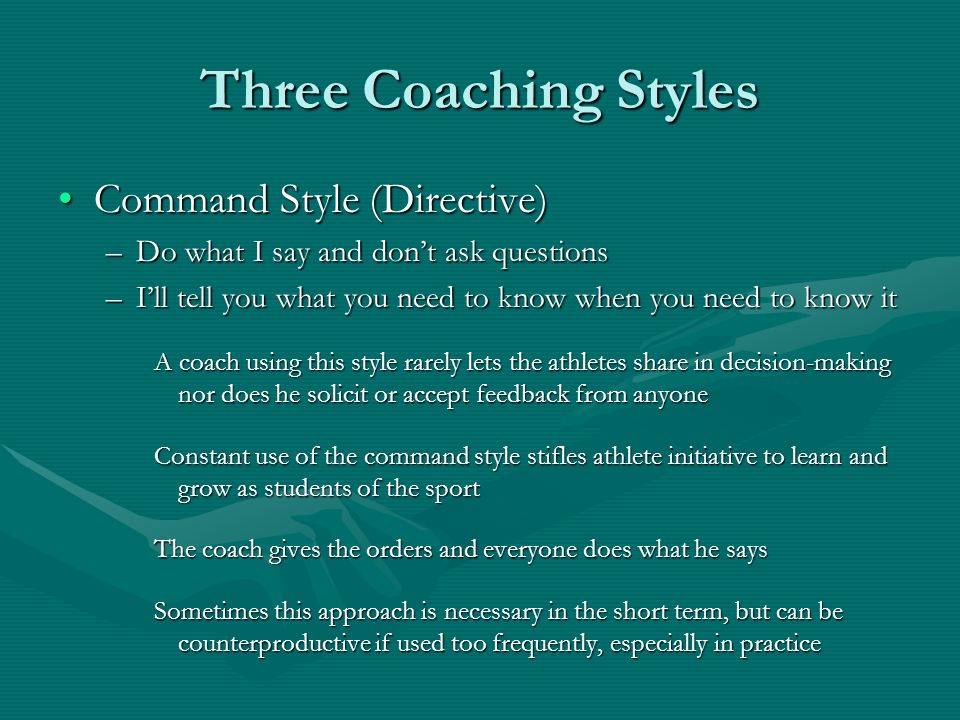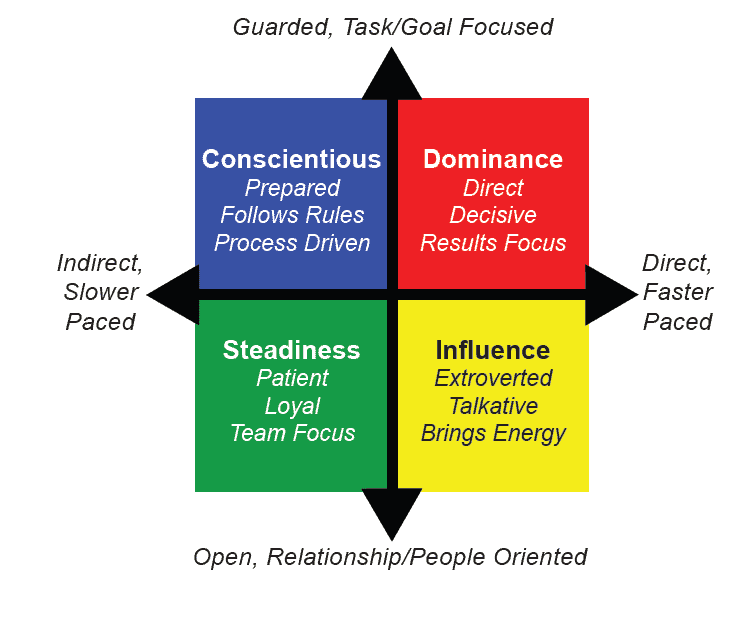Coaching has become an essential part of athletic and professional development, influencing how individuals and teams achieve their goals. One of the most recognized approaches is the command style of coaching. This article explores various facets of this coaching style, including its applications, advantages, disadvantages, and comparisons with other methods.
What is Command Style Coaching?
Command style coaching is characterized by a direct and authoritative approach where the coach takes charge of the training process. The coach typically issues commands, provides instructions, and expects immediate compliance from the athletes or team members. This style draws on a structured environment, often used in traditional sports training where discipline and order are paramount.
Key Characteristics of Command Style Coaching
- Authoritative Leadership: The coach assumes a dominant role in decision-making.
- Clear Instructions: Directions are explicit and aimed at ensuring all athletes understand expectations.
- Immediate Feedback: Coaches provide prompt feedback, often correcting mistakes on the spot.
- Focus on Skill Acquisition: The approach is primarily task-oriented, emphasizing skill and technique over personal development.
Historical Context and Popularity in the USA
Command style coaching has roots in various sports where the need for discipline and structure is critical. In the United States, this style gained traction in team sports like football and basketball during the mid-20th century. Iconic coaches such as Vince Lombardi exemplified this approach by fostering a culture of obedience and high expectations. Cultural attitudes toward winning and discipline in American sports further solidified the command style as a widely accepted coaching method.

Comparative Analysis of Coaching Styles
While command style coaching is effective, it is not the only method available. Here, we explore comparisons with other styles:
Comparison Table: Command Style vs. Other Coaching Styles

| Coaching Style | Description | Pros | Cons |
|---|---|---|---|
| Command Style | Authoritative with direct commands from coach. | Clear structure, quick skill acquisition, strong discipline. | May stifle creativity, reduce player autonomy. |
| Submissive Style | Coach takes a back seat; decisions are left to athletes. | Encourages player autonomy, fosters creativity. | Lacks direction, can lead to chaos. |
| Collaborative Style | Coaches and players work together to set goals. | Fosters teamwork, shared decision-making. | Can be time-consuming to reach consensus. |
| Holistic Style | Focus on the overall growth of the athlete. | Considers mental and emotional well-being. | Can be less focused on immediate skill development. |
Pros and Cons of Command Style Coaching

Advantages
- Structured Environment: Provides a clear framework that athletes can rely on.
- Rapid Skill Development: Immediate corrections lead to quick progression in skill levels.
- High Accountability: Athletes understand their responsibilities and the importance of performance.
Disadvantages
- Lack of Personal Growth: Can restrict athletes’ ability to express themselves and develop independently.
- Inflexibility: May not adapt well to diverse athlete needs or varying skill levels.
- Potential for Stress: High pressure might lead to anxiety and burnout in some athletes.

Implementing Command Style Coaching
To successfully implement command style coaching, consider the following tips:
Tips for Effective Command Style Coaching
- Communicate Clearly: Ensure all instructions are straightforward and unambiguous.
- Be Consistent: Maintain a uniform approach to rules and expectations throughout training sessions.
- Monitor Progress: Use assessments and feedback loops to gauge athlete performance regularly.

Technology and Platforms Supporting Command Style Coaching
The rise of technology has influenced coaching methods significantly. Below, we examine some platforms that facilitate command style coaching.
Top Coaching Platforms

| Platform | Features | Best For |
|---|---|---|
| TeamSnap | Scheduling, communication, and performance tracking. | Team sports needing organization and command. |
| Hudl | Video analysis, game planning, and stat tracking. | Performance review through video feedback. |
| Coach’s Eye | Video coaching, instant feedback, performance analysis. | Detailed skill development with visual support. |
| MyCoach | Goal setting, workout tracking, and analytics. | Individual training with structured oversight. |
Cultural Experiences with Command Style Coaching
In the United States, command style coaching resonates strongly with competitive sports culture. High school and collegiate athletics often emphasize a commanding approach, where success is crucial for scholarships and career opportunities. Many coaches likewise adopt this method during training camps, where discipline is essential for team cohesion and readiness.

Local Perspective: Command Style in College Sports
In collegiate athletics, notably in powerhouses like the University of Alabama or Duke University, command style coaching is prevalent. Coaches like Nick Saban and Mike Krzyzewski have mastered this approach, fostering environments that demand respect and adherence to their structured training regimens. These institutions showcase how effective this coaching style can be, yielding numerous championships and producing elite athletes.
FAQs About Command Style Coaching

1. What are the primary differences between command style and collaborative coaching styles?
Command style focuses on the coach’s authority and direct instructions, while collaborative styles involve athlete input and shared decision-making.
2. How can command style coaching be beneficial in youth sports?
It provides a structured environment that can promote discipline and skill development among young athletes.
3. What are some examples of command style coaching in professional sports?
Coaches like Bill Belichick in the NFL and Phil Jackson in the NBA have used aspects of command style coaching to build and lead successful teams.
4. How do athletes respond to command style coaching?
Responses can vary; some athletes thrive under the directness, while others may feel stifled and prefer more autonomy.
Conclusion
The command style of coaching offers a structured and disciplined approach to developing athletes. While it has its advantages in terms of skill acquisition and accountability, it’s essential to recognize its limitations, such as a potential lack of creativity and personal growth. Coaches must adapt their styles to their teams and individuals, potentially integrating elements from other coaching methods to create a well-rounded training environment.
For those interested in exploring coaching methodologies further, consider reviewing resources from the NCAA and engaging in professional development workshops focused on modern coaching strategies.